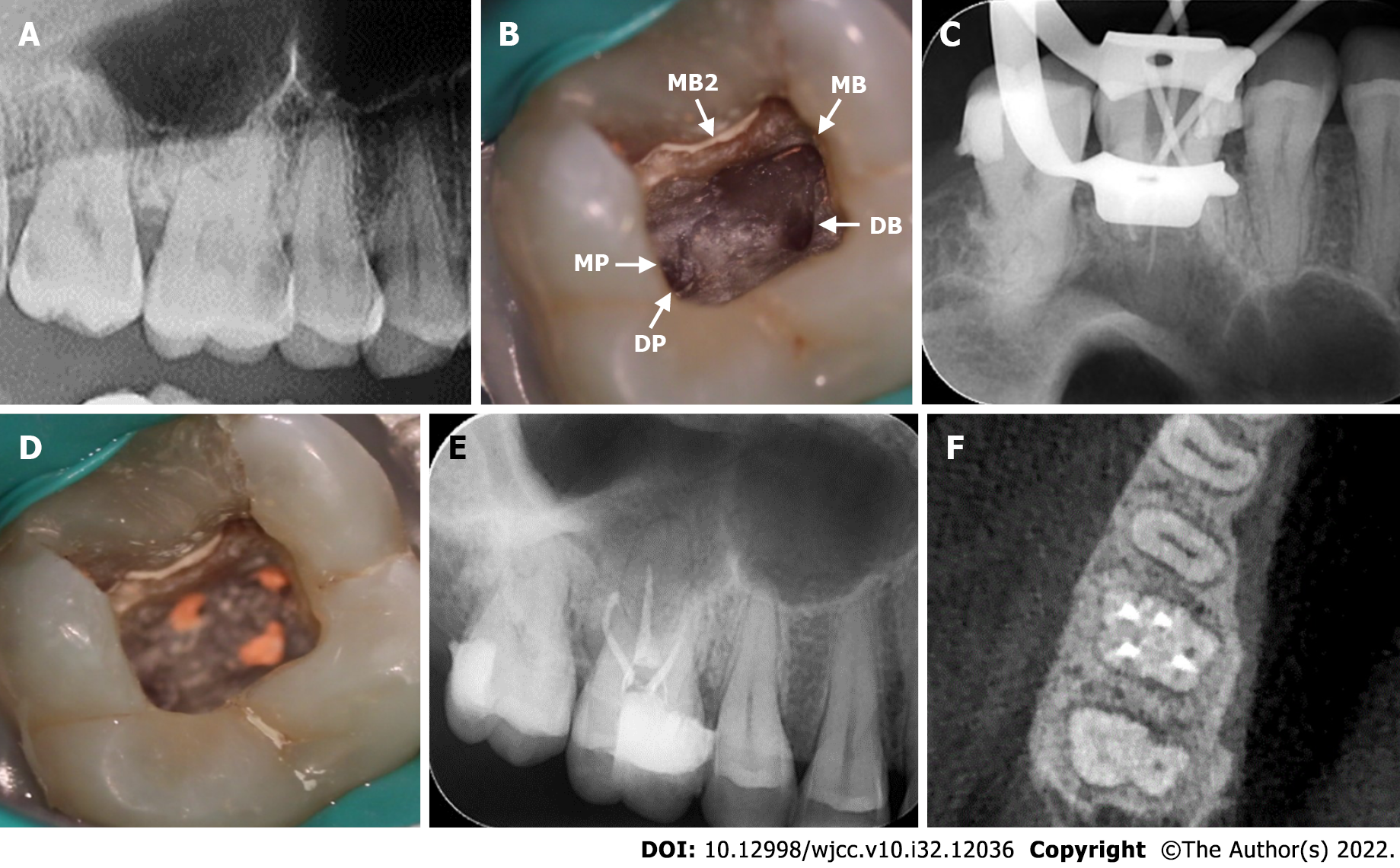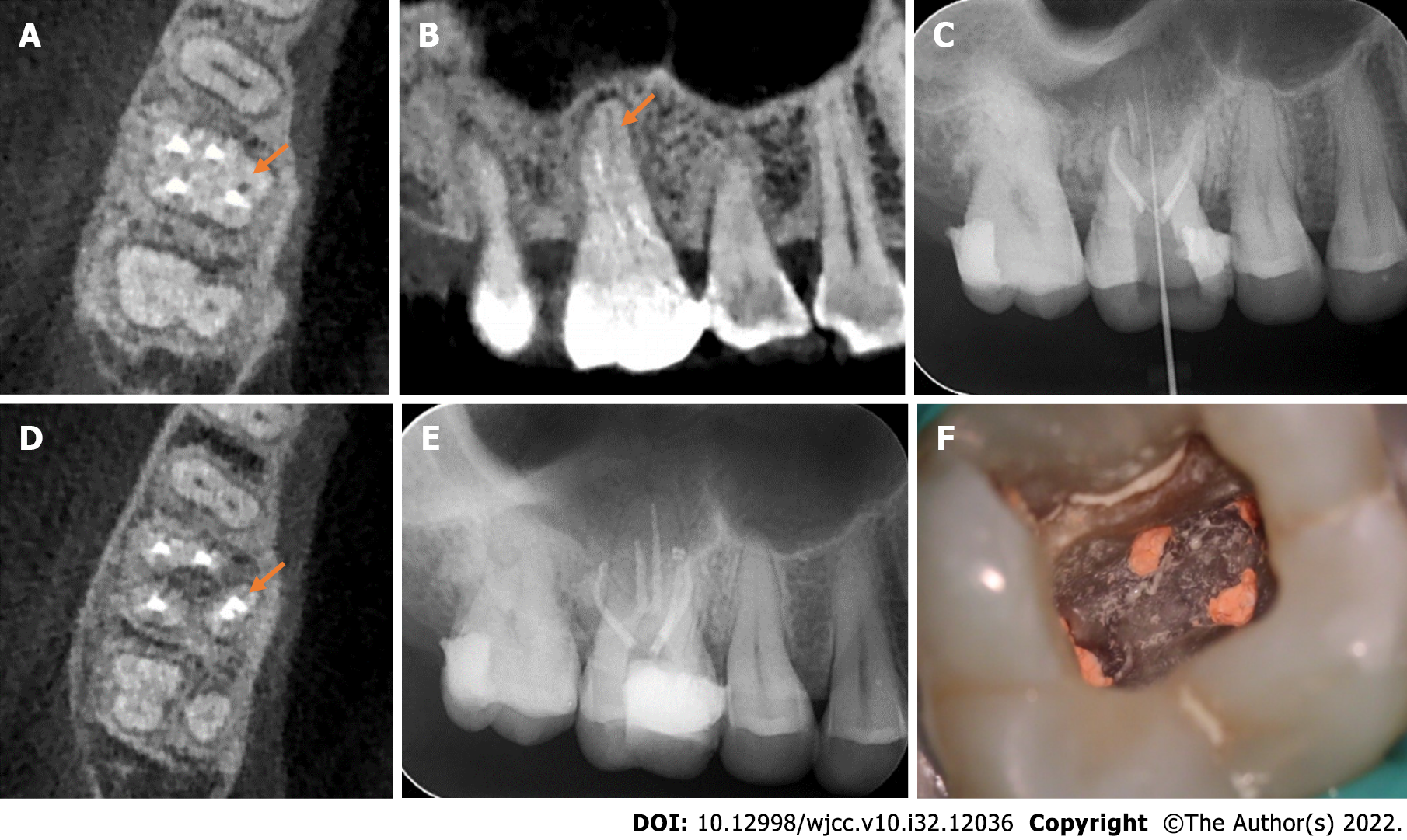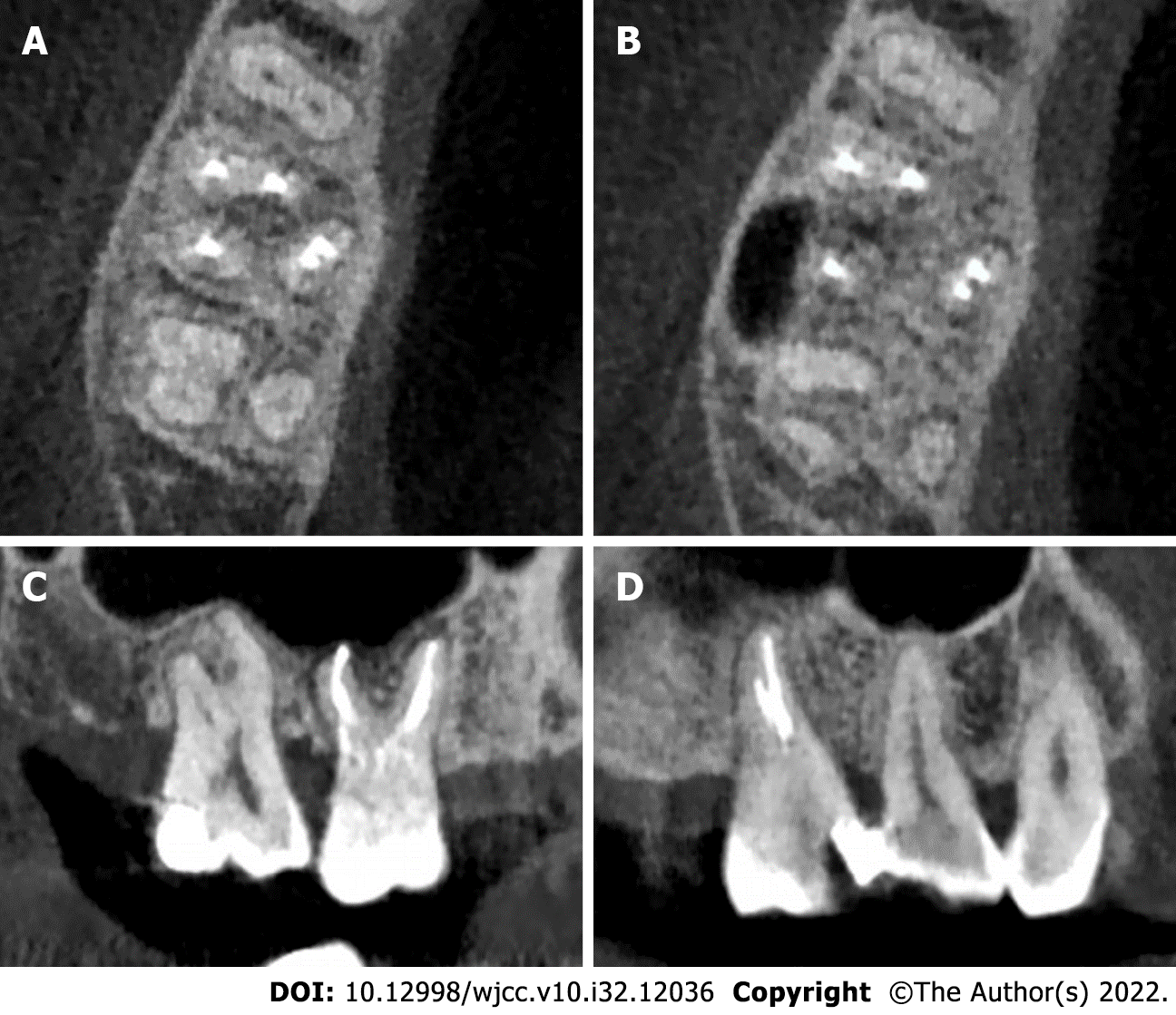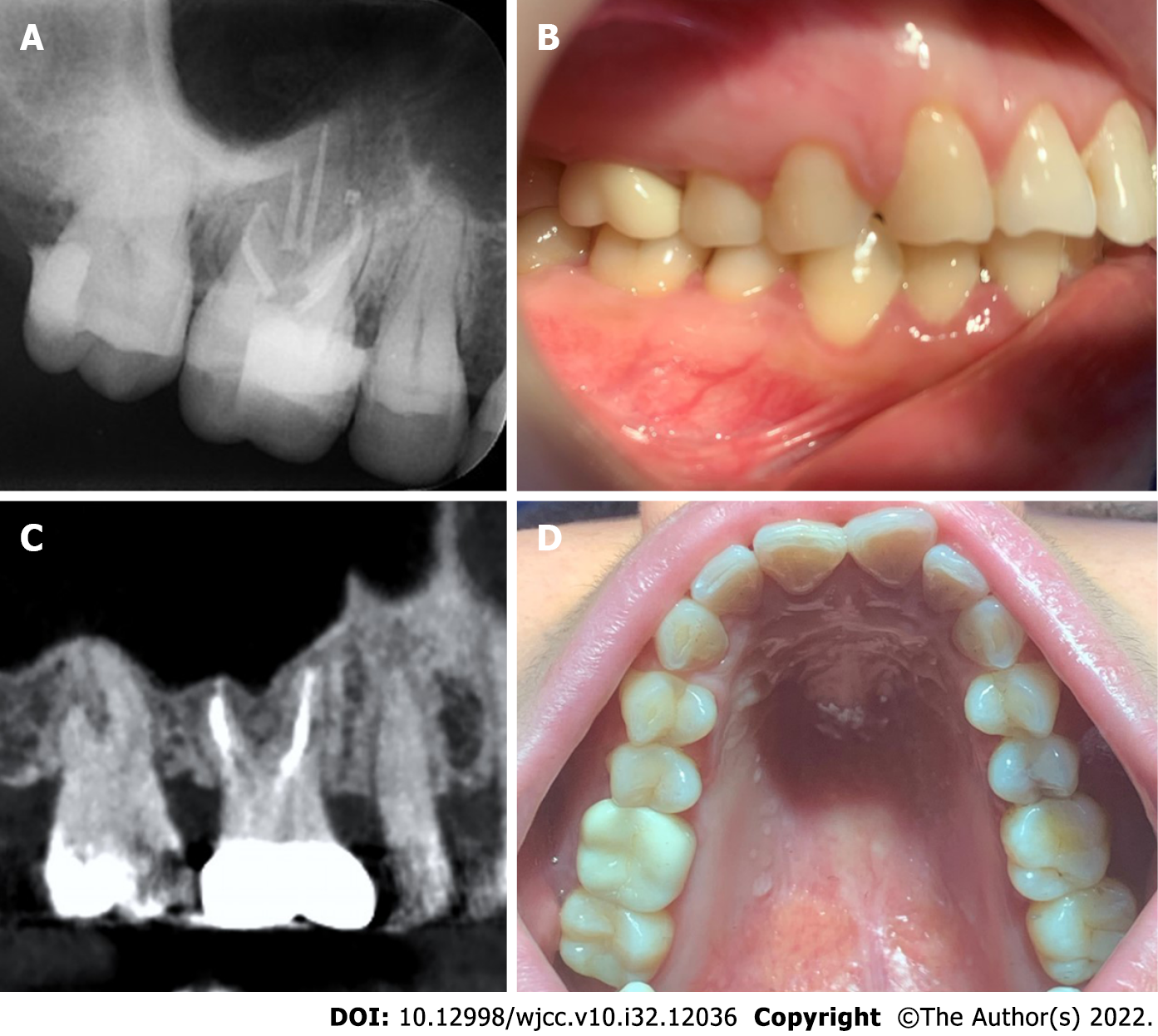Copyright
©The Author(s) 2022.
World J Clin Cases. Nov 16, 2022; 10(32): 12036-12044
Published online Nov 16, 2022. doi: 10.12998/wjcc.v10.i32.12036
Published online Nov 16, 2022. doi: 10.12998/wjcc.v10.i32.12036
Figure 1 Treatment process under the endodontic microscope and X-ray.
A: A preoperative digital panoramic radiograph of the maxillary right region. Carious lesions are identified in the maxillary first and second molars; B: Intraoral photograph reveals five root canal orifices (white arrow) in the maxillary first molar, such as mesiobuccal (MB), second mesiobuccal (MB2), distobuccal (DB), mesiopalatal, and distopalatal (DP) canals; C: The X-ray confirms the working length of the MB, DB, and DP canals; D: The MB, MB2, DB, and DP canals are obturated with injectable thermoplasticized gutta-percha; E and F: The postoperative X-ray and cone-beam computed tomography image confirms that the MB, MB2, DB, and DP canals are tightly obturated.
Figure 2 X-ray and an intraoral photograph showing the treatment process of the mesiopalatal canal.
A: The cone-beam computed tomography (CBCT) image reveals that the maxillary first molar contains three roots, and the mesiopalatal (MP) canal has not been filled (orange arrow); B: The CBCT image reveals an unfilled MP canal in the palatal root (orange arrow); C: The X-ray demonstrates the measurement of the working length of the MP canal; D: The axial sectional CBCT image reveals that the MP canal is tightly obturated (orange arrow); E: The X-ray reveals that five canals of the tooth are well obturated; F: The intraoral photograph reveals that the mesiobuccal (MB), MB2, distobuccal, MP, and distopalatal canals are obturated with gutta-percha.
Figure 3 The anatomical structure of the right maxillary first molar was analyzed by cone-beam computed tomography.
A: The cone-beam computed tomography (CBCT) image reveals that the maxillary first molar contains three roots; B: The axial sectional CBCT image demonstrates that the distobuccal (DB) root has one canal, and the mesiobuccal (MB) and palatal roots have two separate canals; C: The sagittal sectional CBCT image reveals that the MB, MB2, and DB canals are well filled; D: The sagittal sectional CBCT image indicates that the mesiopalatal and distopalatal canals in the palatal root are obturated.
Figure 4 Final crown restoration of the right maxillary first molar.
A: The X-ray at the 1-mo follow-up reveals that the five root canals of the tooth are well obturated; B: Final ceramic crown restoration is performed in the maxillary first molar; C: Radiographic image at the 9-mo follow-up; D: Clinical image at the 9-mo follow-up.
- Citation: Chen K, Ran X, Wang Y. Endodontic treatment of the maxillary first molar with palatal canal variations: A case report and review of literature. World J Clin Cases 2022; 10(32): 12036-12044
- URL: https://www.wjgnet.com/2307-8960/full/v10/i32/12036.htm
- DOI: https://dx.doi.org/10.12998/wjcc.v10.i32.12036












